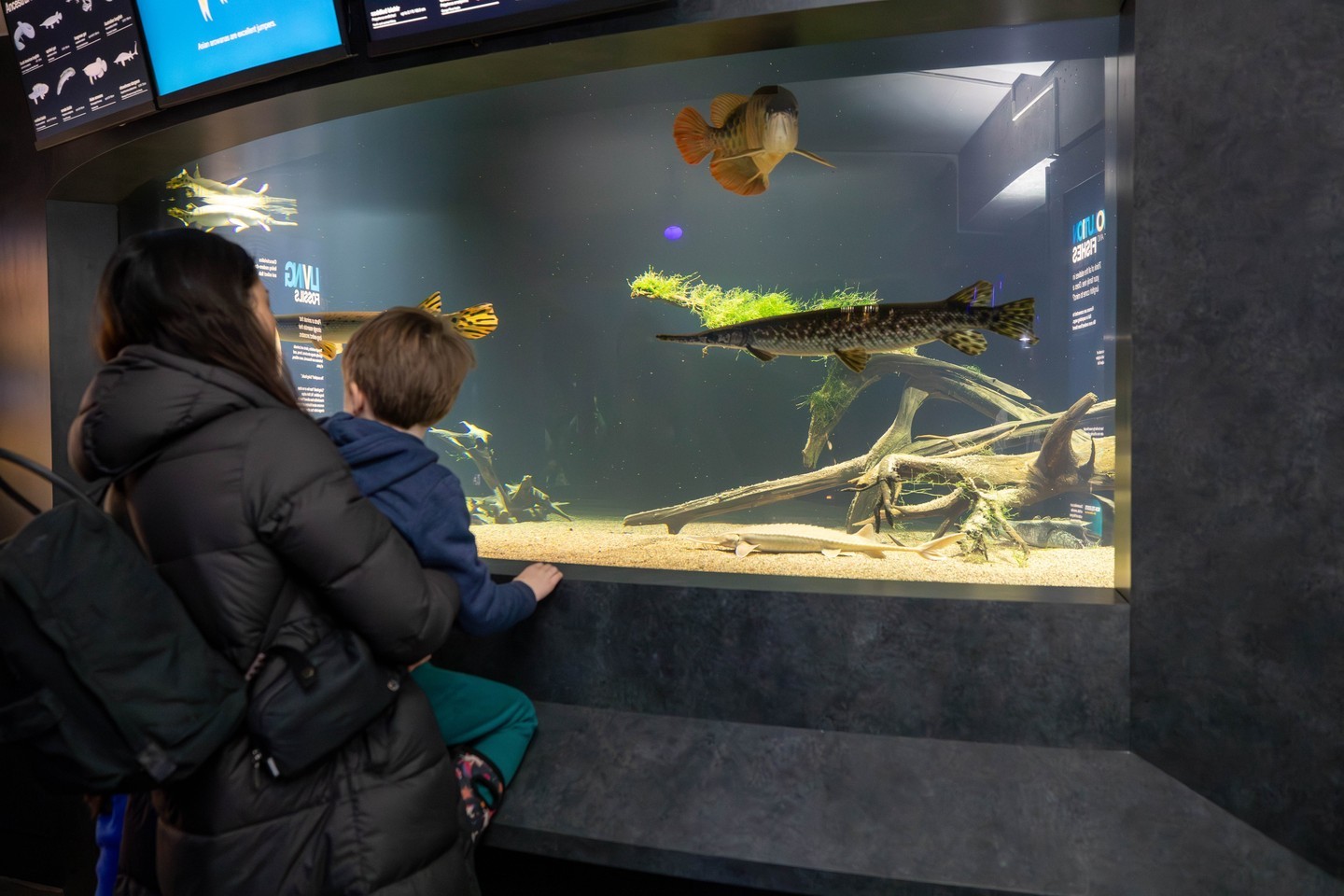- Understanding "Living Fossils": Ancient Survivors in Modern Times
- Key Physical Traits of Fish Classified as Living Fossils
- The Evolutionary Significance of Lobe Fins, Ganoid Scales, and Jawless Mouths
- The Role of Specialized Air-Breathing Adaptations
- Conservation Efforts and the Importance of Studying Living Fossils
Understanding "Living Fossils": Ancient Survivors in Modern Times
Throughout the vast timeline of evolution, a small number of species have managed to retain their ancient characteristics. These species are known as "living fossils." The term "living fossil" describes a living organism that looks very similar to its extinct relatives from millions of years ago. This visual coherence offers a tangible connection to the distant past and provides a living window into the history of life on Earth. Living fossils are a testament to the resilience of life, having survived through epochs marked by extreme climatic shifts and environmental upheavals. These species serve as biological benchmarks, allowing scientists to study evolutionary processes and adaptations in a dynamic world.
Key Physical Traits of Fish Classified as Living Fossils
Fish that fall under the living fossil category, such as the coelacanth and the sturgeon, exhibit remarkable ancestral features. Coelacanths, once thought to be extinct, were rediscovered in the 20th century, stunning the scientific community. They possess lobe fins, thick ganoid scales, and other primitive traits that have remained unchanged for millions of years. Similarly, sturgeons boast a lineage dating back to the Jurassic Period, characterized by an amalgam of primitive and modern features.
The coelacanth’s lobe fins are especially intriguing. These fins contain bone structures aligned with the limbs of terrestrial animals, offering insight into the evolutionary transition from water to land. Sturgeons, on the other hand, display ganoid scales, which are robust, enamel-like structures, providing formidable protection and evolutionary stability. These characteristics not only highlight evolutionary stasis but also emphasize the adaptive success of these fish in their environments.
The Evolutionary Significance of Lobe Fins, Ganoid Scales, and Jawless Mouths
Studying the lobe fins of coelacanths provides invaluable knowledge about the evolutionary development from aquatic to terrestrial life. These fins, supported by a series of bones, are reminiscent of early tetrapod limbs. The transition is further exemplified by early vertebrate fossils, shaping our understanding of evolutionary biology.
Ganoid scales, seen prominently in species like the gar fish, are another ancient feature. Unlike the more flexible scales of modern teleost fish, ganoid scales are plate-like and heavily mineralized. This structural integrity confers exceptional defense against predators and has persisted through evolution, indicating its effectiveness.
In lampreys and hagfish, the presence of jawless mouths represents one of the most primitive vertebrate conditions. These fish provide a living reference to the early vertebrate lineage, shedding light on the basic vertebrate anatomy that preceded the development of jaws. Through examining the anatomy and genetics of these jawless fish, researchers can reconstruct early vertebrate evolutionary pathways.
The Role of Specialized Air-Breathing Adaptations
One of the adaptations contributing to the longevity of living fossils is the ability to breathe air, demonstrated by certain fish capable of surviving both in water and on land. Lungfish, for instance, possess lungs alongside gills, permitting them to inhale air when water oxygen levels are insufficient. This adaptation originates from a shared evolutionary trait with terrestrial vertebrates, laying the foundation for this ability long before true terrestrial adaptation occurred.
Such adaptation reflects a broader evolutionary strategy where organisms develop methods to withstand adverse or fluctuating environments. The biological resilience seen in these fish points to evolutionary precision, revealing how ancestral habits and forms are optimized to meet contemporary challenges. Studying these traits offers direct insights into early vertebrate life strategies, leading to an enhanced understanding of adaptability and resilience.
Conservation Efforts and the Importance of Studying Living Fossils
The conservation of living fossils involves safeguarding these ancient lineages against modern threats like habitat destruction, pollution, and climate change. The allure of preserving these species goes beyond their rarity; it encompasses the preservation of genetic heritage and the profound insights they offer into evolutionary history.
For instance, the sturgeons are critically endangered due to overfishing and habitat loss. Conservation programs focus on habitats and breeding initiatives to stabilize their populations. Similarly, education initiatives aim to raise awareness about the ecological significance of living fossils, engaging public interest and support for conservation efforts.
Studying living fossils is vital for understanding evolutionary processes and biological resilience. The information gathered aids in conservation strategies and enriches our comprehension of our planet’s biodiversity. As we continue to navigate the present and prepare for environmental uncertainties ahead, living fossils remind us of the longevity and persistence that underlie the natural world. By protecting these species, we not only conserve biological diversity but also safeguard a direct link to the planet’s evolutionary narrative.
*****
Source Description
There are some species who have defied time, holding onto physical traits that connect them to the distant past. ⌛️
Because these species remain remarkably similar to their ancient ancestors, they are known as “living fossils.” Unlike most organisms, these rare survivors have withstood extreme changes and natural disasters.
In fishes, some of these features include:
• Lobe fins—muscle-and-bone structures similar to the limbs of land animals
• Ganoid scales—thick, interlocking armor-like scales
• Jawless mouths—dating back to early evolution
• Specialized air-breathing adaptations
By studying fossils, scientists can trace how these features have endured, linking the ancient past to the present!
Learn more about evolution and unique adaptions at the “News & Stories” link in our bio.


